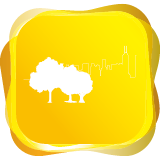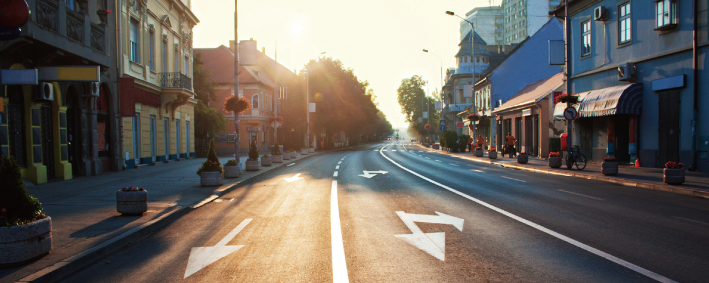 |
CCHU9037Street Sense:
|
Course Description
The goal of this course is to give students an understanding of the rich and complex inter-relationship between contemporary urbanism and the environment. With Hong Kong as a laboratory, this course will explore the city as a series of distinct sensorial environments: light and dark, wet and dry, fragrant or noxious, hot or cool; each with its own complex relationships with civic society. How are the different environments of the city created? Which technological innovations were most important in producing the urban environments in which more than 50% of the world’s population live today? What are the implications for society of public space in cities under different environmental conditions? The course introduces students to the historic origins and contemporary theories of the urban environment. Covering both the general trends in social and technological history that drive the development of cities, and specific examples in depth, this course encourages an understanding of the reciprocal relationship between technology and the environment. According to the United Nations Population Fund, 2008 marked the first time in human history that more than half the world’s population, a sum of 3.3 billion people, lived in cities. The effects of this population shift are felt urgently in China, but are relevant and far reaching on a global scale. How has this intense urbanization affected the human environment, and how can future cities be planned for more healthy, pleasant and active spaces? Understanding this will be increasingly important to many fields of study.

Course Learning Outcomes
On completing the course, students will be able to:
- Identify and explain the impact of urban development on the human environment.
- Analyze the role of urban development in determining the urban environment in terms of its effect on society.
- Engage in debates on the role of urban development in determining the urban environment in terms of its effect on society.
Offer Semester and Day of Teaching
First semester (Wed)
Study Load
| Activities | Number of hours |
| Lectures | 24 |
| Tutorials | 12 |
| Fieldwork / Visits | 15 |
| Reading / Self-study | 39 |
| Assessment: Essay / Report writing | 25 |
| Assessment: Presentation (incl preparation) | 5 |
| Total: | 120 |
Assessment: 100% coursework
| Assessment Tasks | Weighting |
| Group project | 30 |
| Term paper | 30 |
| Reflective journal | 10 |
| Presentation and report | 20 |
| Participation | 10 |
Required Reading
- Cervero, R., & Sullivan, C. (2011). Green TODs: Marrying transit-oriented development and green urbanism. International Journal of Sustainable Development and World Ecology, 18(3), 210-218.
- Chui, E. (2008). Ageing in place in Hong Kong—challenges and opportunities in a capitalist Chinese city. Ageing International, 32(3), 167-182.
- Downs, A. (1998). The big picture: How America’s cities are growing. The Brookings Review, 16(4), 8-11.
- Girouard, M. (1985). Cities and people: A social and architectural history. New Haven: Yale University Press. [The uses of leisure, pp. 181-210]
- Gissen, D. (2009). Subnature: Architecture’s other environments. New York: Princeton Architectural Press. [Exhaust, pp. 72-85]
- Gordon, P., & Richardson, H. W. (1998). Prove it: The costs and benefits of sprawl. The Brookings Review, 16(4), 23-25.
- Gu, C., & Shen, J. (2003). Transformation of urban socio-spatial structure in socialist market economies: The case of Beijing. Habitat International, 27(1), 107-122.
- Kloosterman, R. C. (2014). Cultural amenities: Large and small, mainstream and niche—a conceptual framework for cultural planning in an age of austerity. European Planning Studies, 22(12), 2510-2525.
- Knox, P. L. (2011). Cities and design. New York: Routledge. [Conclusion: Toward liveability and sustainability, pp. 236-279]
- Landry, C. (2011). Creativity, culture & the city: A question of interconnection. Paper presented at the Forum d’Avignon, Paris.
- Li, W., Liu, J., & Li, D. (2012). Getting their voices heard: Three cases of public participation in environmental protection in China. Journal of Environmental Management, 98, 65-72.
- Lin, Y. -T. (2014). The treasure hill ‘symbiotic’ settlement. In F. Miazzo & T. Kee (Eds.), We own the city: Enabling community practice in architecture and urban planning (pp. 204-211). Amsterdam: Trancity x Valiz.
- Moavenzadeh, F., & Liddle, B. (1997). Sustainability of the urban environment: A case for energy efficiency in the building sector. Journal of Urban Technology, 4(2), 5-26.
- Moss, M. L. (1998). Technology and cities. Cityscape, 3(3), 107-127.
- Ng, M. K., & Tang, W. -S. (1999). Land-use planning in ‘one country, two systems’: Hong Kong, Guangzhou, and Shenzhen. International Planning Studies, 4(1), 7-27.
- Power, D., & Scott, A. J. (2011). Culture, creativity, and urban development. In A. Pike, A. Rodriguez-Pose & J. Tomaney (Eds.), Handbook of local and regional development (pp. 162-171). Abingdon, Oxon; New York: Routledge.
- Scott, A. J. (2010). Cultural economy and the creative field of the city. Geografiska Annaler: Series B, Human Geography, 92(2), 115-130.
- Thompson, E. (2005). Noise and noise abatement in the modern city. In M. Zardini (Ed.), Sense of the city: An alternate approach to urbanism (pp. 190-199). Baden, Switzerland: Lars Müller Publishers.
- Warner, J., Talbow, D., & Bennison, G. (2013). The cafe as affective community space: Reconceptualizing care and emotional labour in everyday life. Critical Social Policy, 33(2), 305-324.
- Whyte, W. H. (2003). The design of spaces. In R. LeGates & F. Stout (Eds.), The city reader (pp. 429-436). New York: Routledge.
- Yeh, A. G. O. (2003). Public housing and new town development. In Y. M. Yeung & T. K. Y. Wong (Eds.), Fifty years of public housing in Hong Kong: A golden jubilee review and appraisal (pp. 85-107). Hong Kong: The Chinese University Press.
Course Co-ordinator and Teacher(s)
| Course Co-ordinator | Contact |
| Ms T.Y.C. Kee Department of Architecture, Faculty of Architecture |
Tel: 2859 2143 Email: tyckee@hku.hk |
| Teacher(s) | Contact |
| Ms T.Y.C. Kee Department of Architecture, Faculty of Architecture |
Tel: 2859 2143 Email: tyckee@hku.hk |
| Professor D.C.K. Hui Department of Architecture, Faculty of Architecture |

